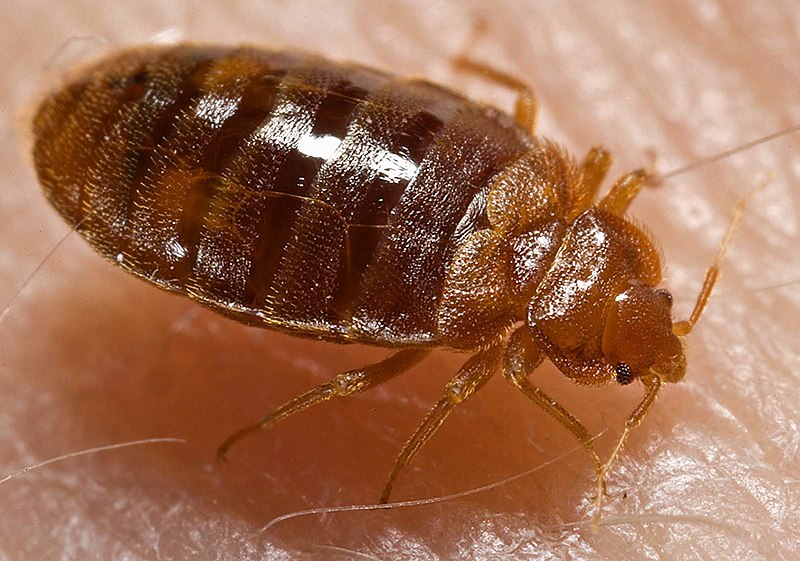Plik:Bed bug, Cimex lectularius.jpg
Wygląd

Rozmiar podglądu – 800 × 561 pikseli. Inne rozdzielczości: 320 × 224 pikseli | 640 × 449 pikseli | 1024 × 718 pikseli | 1280 × 898 pikseli | 1600 × 1122 pikseli.
Rozmiar pierwotny (1600 × 1122 pikseli, rozmiar pliku: 161 KB, typ MIME: image/jpeg)
Historia pliku
Kliknij na datę/czas, aby zobaczyć, jak plik wyglądał w tym czasie.
| Data i czas | Miniatura | Wymiary | Użytkownik | Opis | |
|---|---|---|---|---|---|
| aktualny | 16:11, 17 maj 2007 |  | 1600 × 1122 (161 KB) | Patho | == Summary == {{Information |Description=ID#: 9822 Description: This 2006 photograph depicted an oblique-dorsal view of a '''bed bug nymph, Cimex lectularius''', as it was in the process of ingesting a blood meal from the arm of a “voluntary” human h |
Lokalne wykorzystanie pliku
Następujące strony korzystają z tego pliku:
Globalne wykorzystanie pliku
Ten plik jest wykorzystywany także w innych projektach wiki:
- Wykorzystanie na af.wikipedia.org
- Wykorzystanie na an.wikipedia.org
- Wykorzystanie na ar.wikipedia.org
- Wykorzystanie na arz.wikipedia.org
- Wykorzystanie na ast.wikipedia.org
- Wykorzystanie na azb.wikipedia.org
- Wykorzystanie na be.wikipedia.org
- Wykorzystanie na bg.wikipedia.org
- Wykorzystanie na bjn.wikipedia.org
- Wykorzystanie na bn.wikipedia.org
- Wykorzystanie na bs.wikipedia.org
- Wykorzystanie na ca.wikipedia.org
- Wykorzystanie na ca.wikiquote.org
- Wykorzystanie na ca.wiktionary.org
- Wykorzystanie na ceb.wikipedia.org
- Wykorzystanie na cs.wikipedia.org
- Wykorzystanie na cv.wikipedia.org
- Wykorzystanie na dag.wikipedia.org
- Wykorzystanie na de.wikibooks.org
- Wykorzystanie na din.wikipedia.org
- Wykorzystanie na el.wikipedia.org
- Wykorzystanie na eml.wikipedia.org
- Wykorzystanie na en.wikipedia.org
- Wykorzystanie na en.wikinews.org
- Wykorzystanie na en.wiktionary.org
Pokaż listę globalnego wykorzystania tego pliku.

